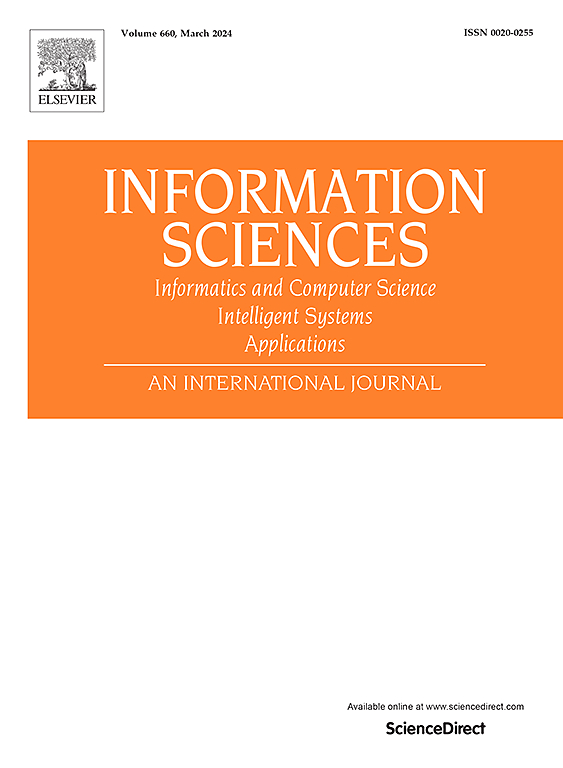ConvDiff:用于动态系统建模的具有潜在扩散模型的多尺度时空卷积网络
IF 6.8
1区 计算机科学
0 COMPUTER SCIENCE, INFORMATION SYSTEMS
引用次数: 0
摘要
在时空动态系统建模中,流体动力学、天气预报和交通流预测等任务面临着高度复杂的时空依赖性和非线性动力学。这些特点使得传统的物理模型和数据驱动方法难以平衡精度和计算效率。为了解决这些挑战,我们提出了一个名为ConvDiff的多尺度时空卷积网络,通过集成潜在空间去噪扩散模型,专门针对动态系统建模任务进行了优化。ConvDiff通过引入多尺度卷积模块,结合物理引导扩散机制,有效捕捉复杂的时空特征,处理物理系统中的不确定性。具体来说,我们的模型包含八个时间模块和四个空间模块,使用分层卷积和扩散结构来捕捉物理系统的复杂动态。实验涉及不同的时空数据,例如来自TaxiBJ和Navier-Stokes数据集的数据。根据调查结果,ConvDiff在基本绩效指标方面取得了实质性进展。例如,在TaxiBJ数据集中,ConvDiff获得的均方差为0.29,PSNR值为40.31,优于表现最好的模型。此外,在Navier-Stokes数据集上,与最佳基线模型相比,ConvDiff将MSE降低了51.15%。这些结果表明,ConvDiff可以有效地捕获复杂的时空依赖关系,提高预测精度,特别是在物理驱动的动态系统中。我们的代码可在https://github.com/Ray-zyy/ConvDiff上获得。本文章由计算机程序翻译,如有差异,请以英文原文为准。
ConvDiff: Multi-scale spatio-temporal convolutional networks with latent diffusion models for dynamic system modeling
In the modeling of spatio-temporal dynamic systems, tasks such as fluid dynamics, weather forecasting, and traffic flow prediction face highly complex spatio-temporal dependencies and nonlinear dynamics. These characteristics make it challenging for traditional physical models and data-driven methods to balance accuracy and computational efficiency. To address these challenges, we propose a multi-scale spatio-temporal convolutional network named ConvDiff, optimized specifically for dynamic system modeling tasks by integrating a latent space denoising diffusion model. ConvDiff effectively captures complex spatio-temporal features and handles uncertainties in physical systems by introducing multi-scale convolutional modules combined with a physics-guided diffusion mechanism. Specifically, our model incorporates eight temporal modules and four spatial modules, using a hierarchical convolutional and diffusion structure to capture the intricate dynamics of physical systems. The experiments involved different spatio-temporal data, such as those from TaxiBJ and the Navier-Stokes dataset. According to the findings, ConvDiff demonstrates substantial improvements in essential performance indicators. For example, in the TaxiBJ dataset, ConvDiff obtained a mean squared deviation of 0.29 and a PSNR value of 40.31, outperforming the best-performing models. Moreover, on the Navier-Stokes dataset, ConvDiff reduced the MSE by 51.15% compared to the best baseline model. These results indicate that ConvDiff effectively captures complex spatio-temporal dependencies and improves prediction accuracy, particularly in physics-driven dynamic systems. Our code is available at https://github.com/Ray-zyy/ConvDiff.
求助全文
通过发布文献求助,成功后即可免费获取论文全文。
去求助
来源期刊

Information Sciences
工程技术-计算机:信息系统
CiteScore
14.00
自引率
17.30%
发文量
1322
审稿时长
10.4 months
期刊介绍:
Informatics and Computer Science Intelligent Systems Applications is an esteemed international journal that focuses on publishing original and creative research findings in the field of information sciences. We also feature a limited number of timely tutorial and surveying contributions.
Our journal aims to cater to a diverse audience, including researchers, developers, managers, strategic planners, graduate students, and anyone interested in staying up-to-date with cutting-edge research in information science, knowledge engineering, and intelligent systems. While readers are expected to share a common interest in information science, they come from varying backgrounds such as engineering, mathematics, statistics, physics, computer science, cell biology, molecular biology, management science, cognitive science, neurobiology, behavioral sciences, and biochemistry.
 求助内容:
求助内容: 应助结果提醒方式:
应助结果提醒方式:


